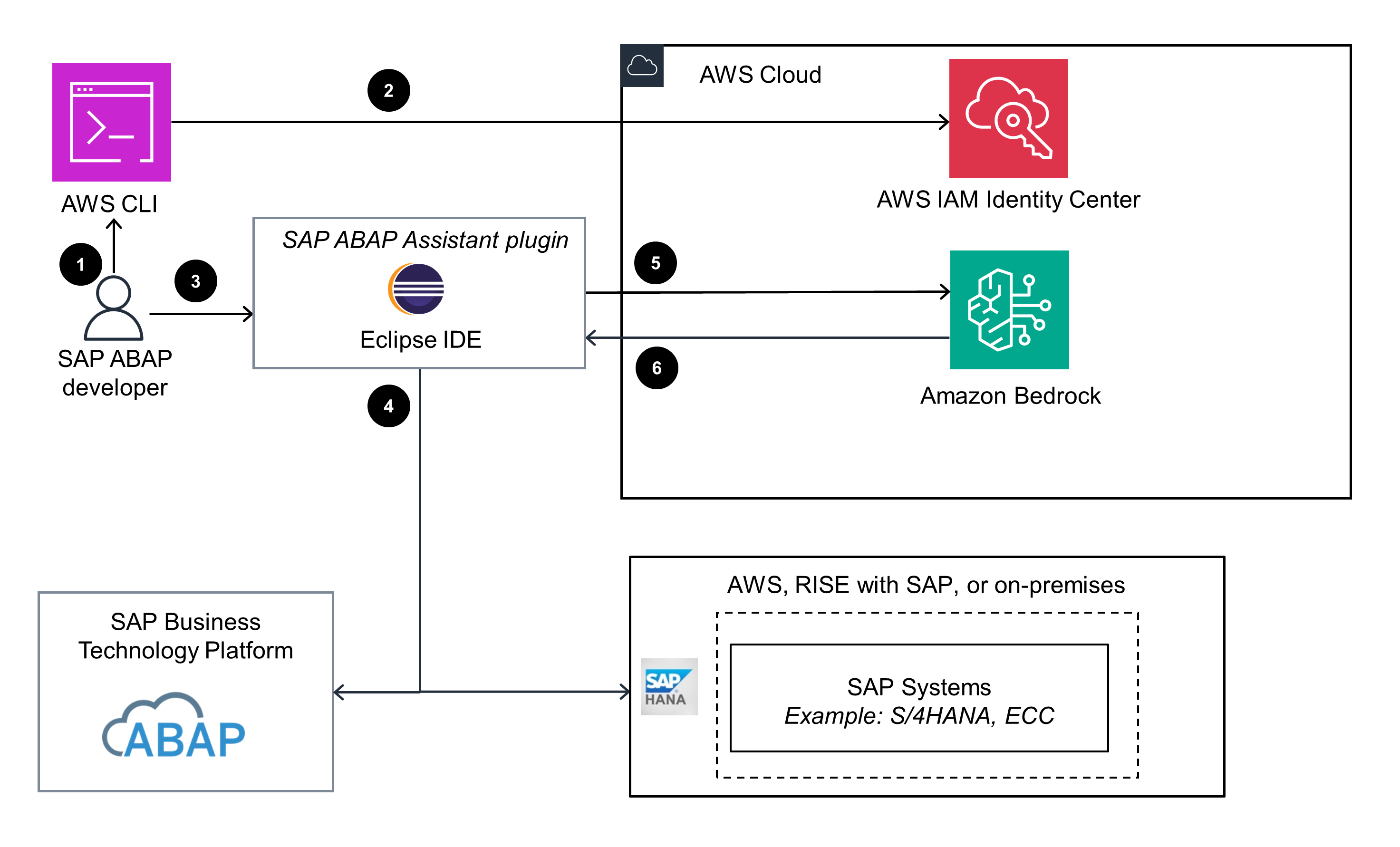- AWS Solutions Library›
- Guidance for Improving Application Development Productivity with the SAP ABAP Assistant on AWS
Guidance for Improving Application Development Productivity with the SAP ABAP Assistant on AWS
Overview
How it works
ABAP Assistant with AWS IAM Identity Center
This architecture diagram shows how SAP ABAP developers can improve their productivity by using the SAP ABAP Assistant in conjunction with Amazon Bedrock and AWS IAM Identity Center to generate SAP ABAP code and documentation.

ABAP Assistant with IAM Roles Anywhere
This architecture diagram shows how SAP ABAP developers can improve their productivity by using the SAP ABAP Assistant in conjunction with Amazon Bedrock and AWS IAM Roles Anywhere to generate SAP ABAP code and documentation.

Get Started
Deploy this Guidance
Use sample code to deploy this Guidance in your AWS account
Well-Architected Pillars
The architecture diagram above is an example of a Solution created with Well-Architected best practices in mind. To be fully Well-Architected, you should follow as many Well-Architected best practices as possible.
AWS CloudFormation allows developers to define infrastructure and application resources as code, reducing manual errors and helping to ensure consistent deployment across different environments. Amazon CloudWatch Logs capture and store API requests from Amazon Bedrock, providing a searchable record of the full request and response data without requiring additional infrastructure. These services streamline resource management, minimize human error, and offer comprehensive logging capabilities, contributing to improved operational efficiency and reliability in the SAP ABAP development process.
IAM Identity Center offers centralized identity management and granular access control. Since the code runs locally, IAM Identity Center authentication is used to provide AWS credentials. In addition, the AWS Identity and Access Management (IAM) policies in the permission set offer fine-grained permissions, allowing administrators to precisely control user access to AWS resources. This approach helps ensure that users have only the necessary permissions to perform their tasks, adhering to the principle of least privilege and strengthening the overall security posture of the SAP ABAP development environment.
Amazon Bedrock is a fully managed and serverless AWS service deployed across multiple Availability Zones by default. Its serverless architecture allows Amazon Bedrock to automatically scale up or down based on demand, supporting consistent performance regardless of workload fluctuations. Moreover, Amazon Bedrock inherits the high availability and fault tolerance features of the underlying AWS infrastructure. This design eliminates the need for manual scaling or infrastructure management, providing developers with a robust and resilient foundation for their SAP ABAP development tasks, even during periods of high demand or in the event of isolated failures.
Amazon Bedrock provides developers access to high-performing foundation models through a single API; developers can evaluate and select the best-fit foundation model for their specific requirements, supporting optimal performance for the application. By offering a range of models and simplifying the selection process, Amazon Bedrock allows developers to efficiently implement and fine-tune artificial intelligence (AI) capabilities in their SAP ABAP projects, leading to faster development cycles and improved application performance.
Amazon Bedrock offers a flexible, pay-as-you-go pricing model without long-term commitments or upfront investments, allowing developers to select the pricing option that aligns best with their usage patterns and budgets. Amazon Bedrock also streamlines cost management by charging only for the resources actually consumed and the number of input and output tokens processed by the foundation models.
Amazon Bedrock uses the energy-efficient infrastructure and data centers of the AWS Cloud. As a fully managed service, Amazon Bedrock eliminates the need for developers to provision and manage their own infrastructure, reducing the energy consumption and carbon footprint associated with running and maintaining physical servers. With the sustainable AWS infrastructure, developers have access to the innovative AI capabilities of Amazon Bedrock while minimizing their environmental impact.
Disclaimer
Did you find what you were looking for today?
Let us know so we can improve the quality of the content on our pages